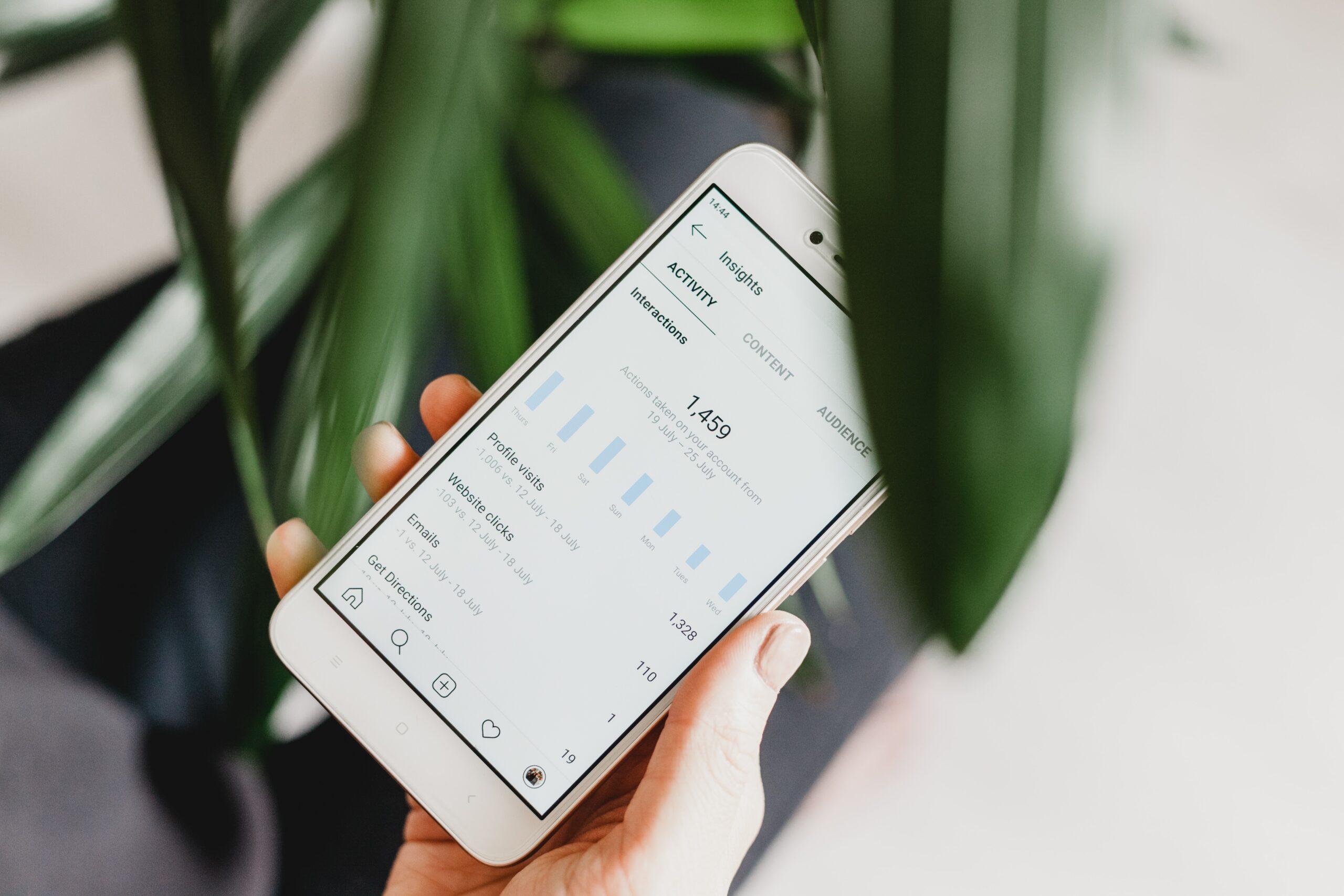Influencer marketing is an effective way to reach new audiences. There are 4.9 billion social media users globally, which is about 60.49% of the world population.[1] By 2027, global social media users are forecasted to reach 5.85 billion.
Table of Contents
- What Is an Influencer Marketing Campaign?
- How to Plan a Successful Influencer Marketing Campaign
- Determine Goals and KPIs
- Define the Target Audience
- Choose the Right Campaign
- Establish Key Campaign Brand Assets and Deliverables
- Finding and Vetting Influencers
- Pitch Influencers
- Activate the Campaign
- Follow Up
- Campaign Planning for Maximum ROI
Everyone from major brands to small businesses is leveraging influencer marketing for success. Still, it takes planning and effort to create an effective campaign.
What Is an Influencer Marketing Campaign?
An influencer marketing campaign is an organized course of action to promote and sell a product or service. Brands may use influencer content or promotion to drive sales, traffic, or brand awareness. This is usually done through social media, which is where influencers have their follower base and community.
In many ways, an influencer marketing campaign is similar to any other marketing campaign. Content is created and distributed on the appropriate channels. Influencer marketing differs from other types of marketing, however, in that it involves the influencer’s unique approach to promoting a brand, product, or service.
How to Plan a Successful Influencer Marketing Campaign
Influencer marketing takes resources. Campaigns should be thoroughly strategized in advance to increase the likelihood of success.
Determine Goals and KPIs
Like any other type of marketing, influencer marketing campaigns should have a goal in mind. Some typical goals are boosting brand awareness, improving sales, or promoting products, services, or events. While some campaigns can be targeted to more than one goal, it’s best to keep a narrow focus.
Once the goals are established, brands need to outline the measurements of success with key performance indicators (KPIs). As influencer marketing campaigns are developed, it’s important to keep these KPIs in mind. They not only track progress on the current campaign, but they can be used to adjust strategy for future campaigns.
Define the Target Audience
The target audience is another key factor in the success of a brand’s influencer marketing campaign – and the right influencer collaboration. While famous influencers with a large audience can be helpful, it’s best to work with an influencer who has an audience interested in a brand’s products or services.
For example, a sports influencer may have a different audience from a baking influencer. However, if a brand has a unique angle with an overlapping audience, such as healthy alternatives to traditional baked goods, both of these influencers may have interested followers.
Another aspect of the audience is determining the right channels. Some influencers have a presence across multiple channels while others are more niche. For example, Pinterest has niche influencers and a niche audience of primarily millennial women in the US with high disposable income.[2] If that’s the appropriate audience, Pinterest is an ideal choice.
Choose the Right Campaign
The goals and audience inform the type of campaign a brand runs, as well as the influencer they choose to work with. Campaign types vary in the content created, how the influencer is compensated, and which channels are ideal.
Here are some common campaigns:
Product Reviews and Giveaway Campaigns
Depending on the influencer, reviews and giveaways may be paid or done in exchange for a free product or service. Influencers are hired to provide a view, testimonial, or tutorial to their audience, increasing awareness.
Another option is a giveaway. This is often a free offer for the product that the influencer promotes using some type of contest or challenge. For example, the accessories brand Loungefly partnered with influencer Rosalie Chiang to give away a Loungefly Turning Red Panda Cosplay mini backpack. The winner was chosen at random after participants followed, liked, saved, and tagged two friends in the post.
Source: Instagram
Affiliate Marketing or Discount Code Campaigns
With this type of campaign, influencers are given an affiliate link or a discount code. They create content to promote and post that link or code, driving traffic to your products. Typically, these campaigns are paid based on sales that result from the link or code.
Sponsored Content
Sponsored content is a common way for brands to collaborate with influencers. Influencers are usually paid to create content and post it on their social media pages. Brands also promote the content to give it wider reach.
Social Media Takeovers
Social media takeovers allow influencers full control over a feed for a predetermined period of time. They can post and interact with followers, driving engagement on a brand’s social media channels. Collaborating for a social media takeover can attract a new audience as the influencer’s audience follows their content.
Pre-Release Campaigns
Pre-release influencer campaigns show off an upcoming product to build anticipation and buzz. This taps into the “fear of missing out” and encourages the brand’s audience to make a purchase when the product launches. In some campaigns, influencers offer an exclusive discount code to buy.
Unboxing Videos
Unboxing videos have been popular for quite some time. An influencer unboxes a product and critiques the process, which can perfect the brand story for new customers and audiences. Unboxing isn’t so much about selling the product as it is about the overall brand experience, but it’s still important for brands to partner with influencers who are familiar with the type of product.
Event Activation Campaigns
Event activation campaigns promote gatherings or meetups by driving awareness. Having the right influencers can boost an event’s credibility and increase attendance and sales. One of the most famous examples of influencers promoting an event is Coachella.
Source: Instagram
Establish Key Campaign Brand Assets and Deliverables
After the campaign is established, brands can finish all the details for the collaboration. This includes the brand assets that should be used, such as the brand guidelines, logo, or existing content. They also need to determine what deliverables are necessary, which could include anything from a simple photo to a series of videos.
Creative guidelines are another important part of campaign planning. It’s important for brands to balance their voice and values with the influencer’s style. Imposing too much control over an influencer takes away the value of working with them, but having no guidelines at all could lead to a campaign that falls flat – or worse, damages the brand.
All brands need a contract to work with influencers as well. This should provide the agreed-upon compensation, deliverables, timeline, branding requirements, content types and frequency, any applicable deadlines, grounds for termination, metrics, and FTC guidelines. If appropriate, it should also have an exclusivity clause or intellectual property content rights.
Finding and Vetting Influencers
Though a lot goes into planning a campaign, finding the right influencer can be the most challenging part. There are plenty of influencer search tools and methods to find the right influencers of all types, including micro- and nano influencers.
Once there’s a narrow list of influencers, they need to be vetted. It’s best to have influencers with an exceptional engagement rate or influencers who drive results. Some influencers overinflate their clout with fake followers and engagement, however, so it’s important for brands to do their due diligence.
Influencers should also be vetted to ensure that they share the brand values. Partnering with the wrong influencers can lead to scandals and reputational damage.
Pitch Influencers
Pitching influencers can be a time-consuming process. Micro- and nano influencers are typically easier to reach, but influencers with bigger followings can get dozens of pitches each day. Brands need to stand out to get their attention and discuss a collaboration.
An influencer outreach strategy is a key part of the process. This involves identifying and engaging with influencers on social media platforms to build a relationship with them and initiate collaborations.
Activate the Campaign
When brands and influencers agree on the collaboration, the campaign can be activated. Brands often have to work with influencers to get the content and creative aspects fine-tuned, especially if it’s the first time.
Once the campaign is active, brands still need to keep up with the influencer and discuss the specifics. Checking in on how the content is going on occasion, being available for questions and assistance, and tracking deliverables are an important parts of influencer campaign management. That said, brands should be careful not to micromanage the influencer, which creates a negative experience.
Follow Up
Measuring the campaign’s performance is crucial to its success – and the success of future campaigns. Brands should check in during the campaign to see if it’s on track to meet the predetermined KPIs. This is an opportunity to tweak or amplify the campaign to hit the target.
After the campaign, brands and influencers should evaluate the results to refine future content and campaigns. This is simple with campaigns that have clear metrics, such as affiliate links or discount codes, but others may be more challenging. Engagement, website or social media traffic, earned media value, and other metrics can be helpful in determining ROI.
Campaign Planning for Maximum ROI
Successful influencer campaigns don’t just happen. From determining the audience and goals to vetting influencers and outlining details, it takes strategy and planning to ensure that they deliver results.
Sources:





